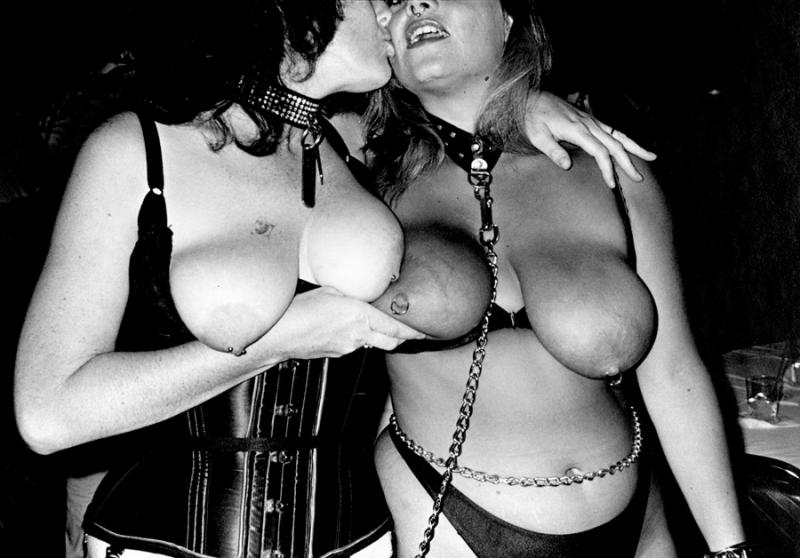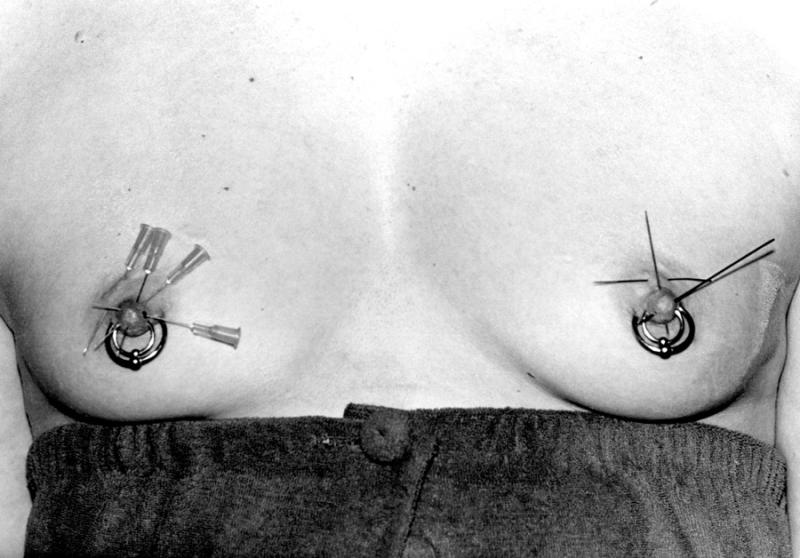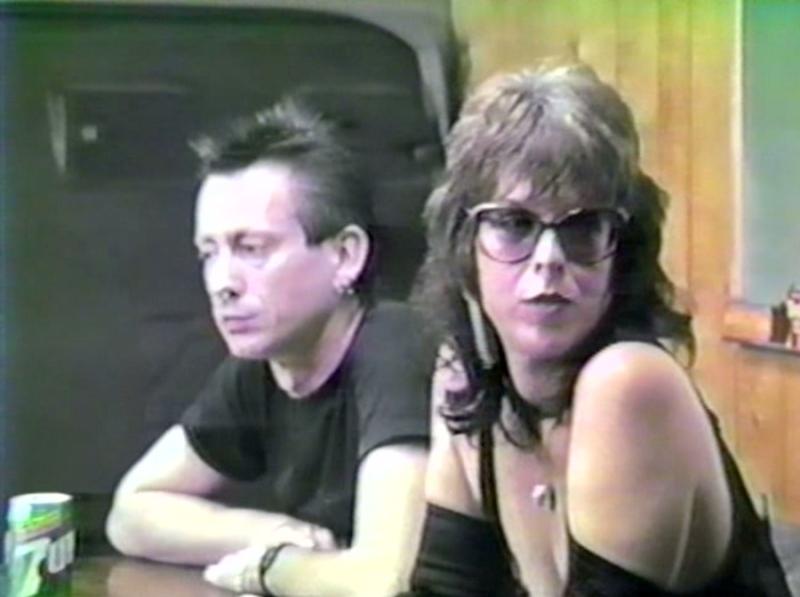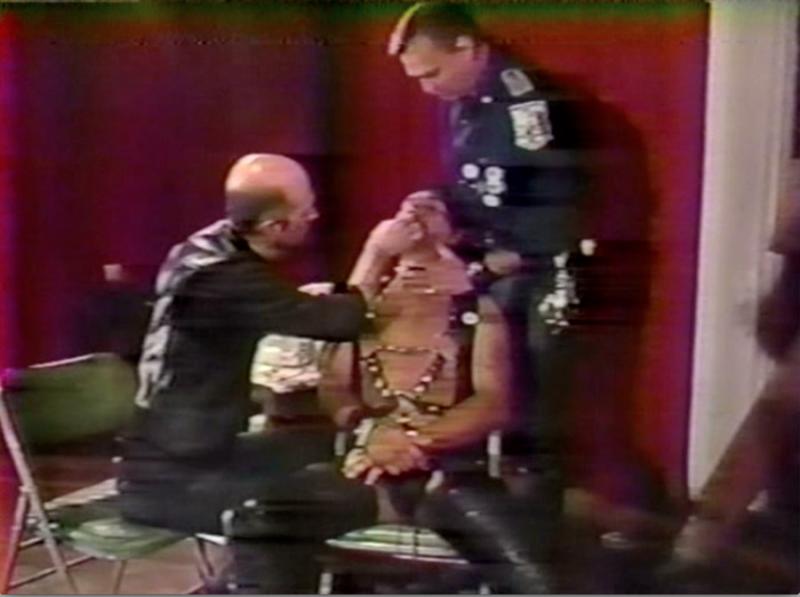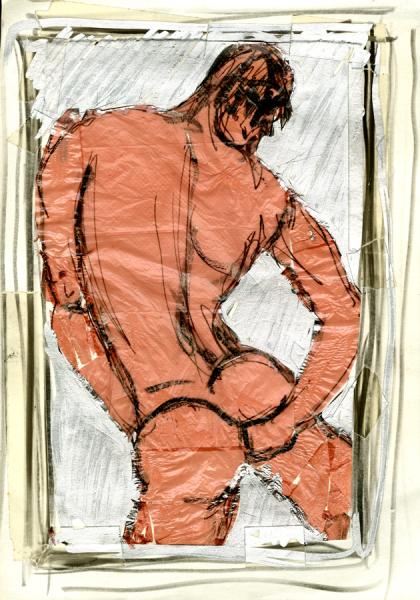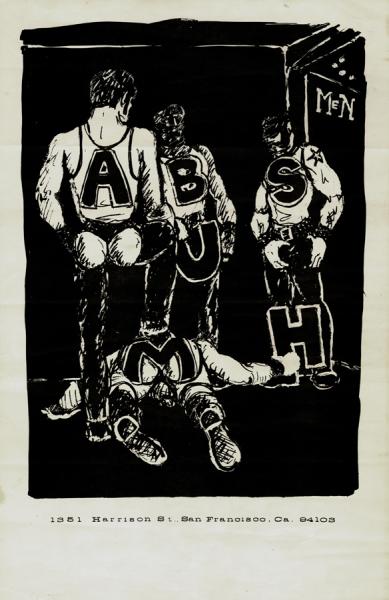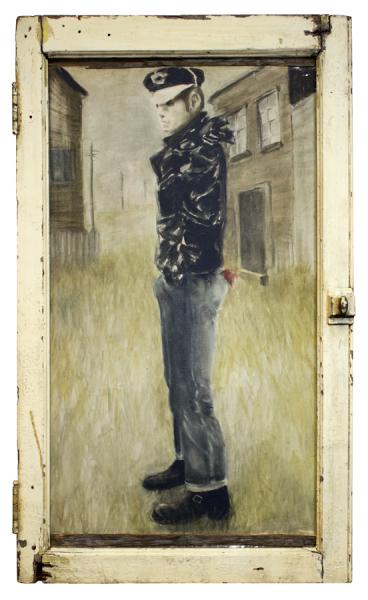
Richard Kraft’s 100 Walkers: Saturday, April 18, 2015 beginning at 2pm in the El Tovar Parking Lot and concluding with a reception at the ONE Gallery from 4-5:30pm
Dress Codes highlights two recent donations to the collections at ONE Archives at the USC Libraries: paintings, drawings, and ephemera by San Francisco artist Chuck Arnett, and photographs and video by Los Angeles performance artist Sheree Rose.
Chuck Arnett (1928–1988) was a Southern ballet dancer who discovered San Francisco’s youth culture of the 1960s, a microcosm of expanding consciousness and self-trained artists. Prior to arriving in San Francisco in late 1962, Arnett assisted the artist Étienne with murals painted inside the Gold Coast bar in Chicago, prefiguring his most recognizable work, the mural at the South of Market leather bar The Tool Box, which appeared in LIFE Magazine’s 1964 article “Homosexuality in America.” Arnett’s mural and poster work were both advertisements for and iconographic self-representations of the hypermasculine and highly sexualized world of 1970s-era bath and bar communities. Similar to artists like Tom of Finland, Arnett’s images of men illustrate the highly stylized and codified performances of masculinity and sexuality. Unlike Finland though, these were not merely stylized figures, but instead portraits of the men who populated the hedonistic pleasure-filled worlds of sex club back rooms. These acquisitions came from the collection of Robert Prager, who judiciously collected and documented Arnett’s legacy.
Performance artist Sheree Rose is perhaps best known for collaborations with her late partner, poet, and performance artist Bob Flanagan. Trained as a photographer, Rose’s immense collection of photographs at ONE documents the local fetish and queer art communities from the 1970s through the 1990s. Dress Codes presents a series of prints by Rose—first exhibited at the West Hollywood alternative video space EZTV in 1988—of women involved in the L.A. piercing community alongside the short video documentary Needles and Pins (1987). Like Rose’s photographs, Needles and Pins examines the then emergent piercing community in Los Angeles, centered at Jim Ward’s store, The Gauntlet, with specific attention to feminist investments in fetish groups. Associated with the “modern primitives” movement, the body manipulation leather/fetish/S&M practices presented in Needles and Pins pushed the corporeal limits of pleasure and pain. Transgressing and queering the boundaries of normative ways of being, these practices lived and breathed in the sensuous nightworlds of L.A.’s queer club scene and in the private and semi-private sex and dungeon party worlds where a queerly sensuous mode of becoming thrived, if only briefly.
Together, the two bodies of work point across alternate moments in time, connecting the raw sexuality and kink of disparate queer communities whose lives and works are now a part of the archives at ONE.
